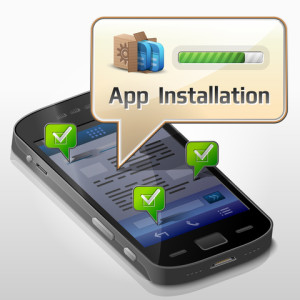Posts tagged "communication"
September 23, 2019
 We all know the old adage, “It’s not personal; it’s just business.”
We all know the old adage, “It’s not personal; it’s just business.”
But we also know that business is not just about numbers and transactions — it’s a highly personal space wherein relationships matter. Businesses rely on their customers to stay afloat. Employees need human connection at work for successful collaboration. They connect with their colleagues, their bosses, their clients, and vice versa, making the network for relationships within and around a single business an intricate one.
What cannot be denied, however, is that the rise of technology in the workplace has altered the way teams communicate. A survey shared by Entrepreneur details key facts on workplace communication: 73% of workers text on a daily basis; 82% make phone calls; 73% work with emails; and 55% use social media as communication tools. These channels have speeded up collaboration like never before, helping teams streamline ideas and organize projects.
Continue Reading »
 Print This Post
Print This Post
Posted by Margaret Page in Business Etiquette, Communication and tagged technology, business, communication
April 10, 2019

A Guide to Tricky Emoji
A colleague recently texted me with a wonderful idea. As someone who messages quite a bit, both personally and professionally, I’m pretty up-to-date on proper etiquette. But when I tried to choose an emoji heart to indicate that I loved my colleague’s idea I was stymied. There were so many choices! A yellow heart? A beating red heart? A large pink heart flanked by smaller hearts?
I’m not alone in my confusion. The misuse of emoji is fodder for Buzzfeed articles about the generation gap between parents and their children — they even show up as plot points in comedies. Here are some of the most commonly used emoji and what they really mean.
Hearts. We all know hearts represent love, but their colors add another layer of meaning. Bustle published a great guide to heart colors that I like to reference. If you’re familiar with the subtle language of giving flowers, you’ll notice a few similarities: Yellow for warmth, purple for drama and glamour, a cluster for over-the-top expression. Save a single red heart, like a single red rose, for a love interest.
Wink. A wink in real life might indicate a joke or a flirtation. In emoji, it is most definitely the latter. Not appropriate in professional texts or with someone other than a partner, spouse, or potential love interest.
Crying laughing. This emoji indicates that you’re laughing so hard that you’re crying — definitely different than the laughing emoji, for which it’s sometimes confused. Make sure you don’t choose the version with a drop of water coming from its forehead: that indicates a nervous, cold sweat.
Smiling face with hands. This face seems very happy, but the hands are an indication that something else is going on. This emoji is a virtual hug — not appropriate for your boss, for example.
Expressionless face. Don’t use this emoji unless you want to convey your displeasure or lack of enthusiasm for an idea, person, or project.
Smiling face with heart eyes. Be careful when using this emoji — it can be applied to an idea you love, but also indicate love or flirtation to the person on the other end of your text message.
There are hundreds of emoji. I’ve concentrated on the way these emoji are used in North America and Europe, but you may run into different interpretations in Asia, for example. When in doubt, type it out rather than use a symbol.
Do you have any emoji horror stories? Please share them in the comments below!
Continue Reading »
 Print This Post
Print This Post
Posted by Margaret Page in Valentines Day, Uncategorized, Business Etiquette, Communication, Everyday Etiquette, Just for Fun and tagged Emoji, hearts, communication
July 10, 2018
 Over the past 9 months, I made over 500 phone calls to people around the world.
Over the past 9 months, I made over 500 phone calls to people around the world.
If you’re in a high-volume industry, such as sales, 500 calls might not sound terribly impressive. But for most of us in North America — unlike our counterparts in China and South America — phone calls are a dying breed. Americans, for example, spend six minutes per day on voice calls compared to 26 minutes for text messages. Millennials, as a rule, are more likely to text than call.
So why did I make 500 personal calls rather than rely solely on emails or even texting apps like Line or WhatsApp? Because hearing someone’s voice and having a real time conversation is a better way to make a personal connection.
I’m not suggesting you switch to an all-call communication style. But I did have several revelations that might encourage you to pick up the phone rather than peck at your keypad.
Continue Reading »
 Print This Post
Print This Post
Posted by Margaret Page in Uncategorized and tagged cell phone etiquette, cell phones, communication
May 8, 2014
 With the multitude of apps available nowadays, the information you need is literally at your fingertips—just a click away. Whatever you need to find, you can be certain “there’s an app for that.” And that can be very handy in so many areas of business and etiquette.
With the multitude of apps available nowadays, the information you need is literally at your fingertips—just a click away. Whatever you need to find, you can be certain “there’s an app for that.” And that can be very handy in so many areas of business and etiquette.
To test out the sheer volume of apps for various needs, I opened the app store on my iPhone and typed in “How to tie a tie.” Up popped the app called “How to Tie a Tie Free.” The app features instructions on how to tie 30 popular neckties knots, plus bow ties, ascots, pocket square folds and men’s scarves! What’s really cool is there is a “virtual mirror,” so you can walk follow the instructions and see your actions right on your phone! (Gentlemen, looking good is easier than ever!)
Traveling abroad for business? Taking a little time to learn the cultural etiquette for the country you’re visiting will help you put your best foot forward when doing business globally. With your smartphone you have access to all kinds of apps to help you navigate business anywhere – with confidence!
Here are a few that will help you in your journey!
- Compare Cultures
This app provides intercultural tips and pointers and is great for those who are involved in intercultural business communication and global working. It illustrates where potential gaps exists between cultures, in a graphical format. Plug in two different countries (your home country vs. visiting country) to see the comparisons for “dimensions” such as Power Distance and Individualism. Click on the “dimension” for tips on how to overcome cross-cultural challenges. Example: In a cultures where there is a high Power Distance the relationship between boss and subordinate is rarely close or personal.
- Tipping Abroad
The comment I found on this app says it all “Heading to Europe next month. Insulted someone last time by over-tipping because I can’t keep track of all the customs!” This tipping app calculates the tip in the local currency of frequently visited countries. Handy to have when dining out abroad!
- QuickTip
This app is one of the most popular free tipping apps on the iTunes. The interface is very user-friendly, with an intuitive slider that allows you to easily adjust the tip percentage. You can see the total tip amount adjust in real-time. No math skills needed!
- Fast Talk
When it comes to business, it’s so important to avoid the “foot in mouth” syndrome! And that can be difficult when you’re in a country where language is a barrier. Download the app before you leave home to get access to hundreds of common phrases from five languages. You can save the phrases for easy access and listen to pronunciations of phrases by native speakers. It’s a great on-the-go way to brush up on a new language.
What apps have you found that helped you communicate and do business with different cultures. We’d love to have you share them here!
Continue Reading »
 Print This Post
Print This Post
Posted by Margaret in Etiquette Edge, Etiquette Tips and tagged culture, communication, cell phone apps
October 3, 2013
 What we say, verbally, is only a small part of how we communicate with others. The most influential part of communication involves the things we don’t say out loud. It’s what people see that has the greatest impact on how we are perceived.
What we say, verbally, is only a small part of how we communicate with others. The most influential part of communication involves the things we don’t say out loud. It’s what people see that has the greatest impact on how we are perceived.
The nonverbal signals we “put out” conveys our message more powerfully than words. And whether we are conscious of it or not, we send out signals that don’t always match up what we’re trying to communicate—or how we want others to perceive us.
Whether we admit it or not, we make sweeping judgements about people based on their body language. Think about the last time you met someone at a networking event. Did that person maintain good eye contact with you, or was he or she fidgeting and scanning the room? If you’re talking with someone who appears to be disengaged, it doesn’t really matter how good the topic of conversation is, you’ve already formed an opinion of him or her based on their body language—and it’s not likely someone you’ll seek out again.
Our body sends cues to the person we’re talking to that has little to do with what’s being said. It says, “I’m bored and uninterested,” or “I’m excited to meet you!”
No matter what words we use, the body doesn’t lie.
Powerful Gestures

Our body language dictates the way people see us but it can also shape our own beliefs on who we are.
Research from Harvard and Columbia Business Schools shows that by holding your body in an expansive “power pose”—leaning back with hands behind the head and feet on a desk, or standing with legs and arms stretched open—will help you feel more confident. Striking these “high-power” poses, for as little as two minutes stimulates higher levels of testosterone—the hormone linked to power—and lowers the levels of cortisol, a stress hormone.
Be conscious of how you’re standing. It’s the first giveaway on whether you are a person of power or not. When you stand straight, with your shoulders back and your head up, you are conveying the message that you are confident and at ease in the situation.
Low-Power Gestures

If we’re uncomfortable in a situation, we tend to make ourselves smaller—we close up. We slouch, keep our feet pointed away from us, have our arms crossed and avoid eye contact. Although we may not realize it, these signals give the impression that we’re unapproachable, defensive and uninterested.
It’s important to note that that the stories we tell ourselves before entering into a situation can have a huge impact on the way our body responds. If you tell yourself that you can’t do it, your body language will communicate that.
What are you saying with your body language? One way to find out is to take a look for yourself. Have someone videotape you engaged in a conversation, and then take a look at the way you are communicating – nonverbally, that is. Ask yourself how you would view someone who looks, talks and acts like you do.
Adjust as needed.
Continue Reading »
 Print This Post
Print This Post
Posted by Margaret in Business Etiquette and tagged body language, communication, nonverbal, power gestures
 We all know the old adage, “It’s not personal; it’s just business.”
We all know the old adage, “It’s not personal; it’s just business.” Print This Post
Print This Post




 Over the past 9 months, I made over 500 phone calls to people around the world.
Over the past 9 months, I made over 500 phone calls to people around the world.



